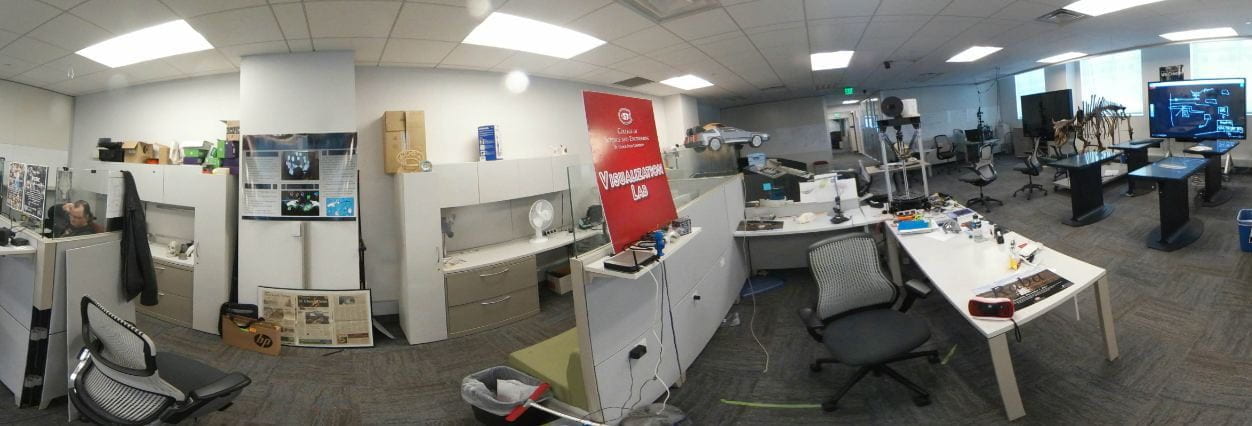Since the prior Seasonal update, the VizLab has applied a number of improvements to the MN NICE project. The last several weeks in particular have given way to some great enhancements, especially in relation to the MN NICE network.
First off, the user avatars now have different heads and hands: the heads bear a striking a resemblance to emojis (akin to the ones you may find yourself using in text messages), and the hands are human-like in appearance. Now, the fingers of the hands correspond to trigger pulls on the Oculus controllers, therefore emulating a gripping of the hand as the player grips both triggers.

A breakthrough in network efficiency has also been made. Essentially, messages are sent over the network in a way that requires far less data. To understand the significance of this advancement, we’ll briefly discuss the nature of the MN NICE network.
The MN NICE network allows collaborative functionality, sending data between operative headsets sharing the network. This data is sent in the form of bytes, which are a unit of storage smaller than megabytes or gigabytes. However, the data generated by MN NICE is not stored as bytes by default—it must be converted to bytes using a process known as serialization. The original method of serializing MN NICE data involved grouping related data together and then serializing that group of data into bytes. To decrease the size of data being sent over the network, the method of serialization has been improved.
This improvement employs a more efficient form of serialization free of extraneous data, dramatically decreasing the size of data sent over the network. Comparisons between the old and new method of serializing data show size decreases as large as 98%, meaning smoother interactions between multiple users on the network.
We’re also implementing a game called “Blockoni,” an interactive math game that encourages collaboration. Blockoni emphasizes analytical thinking skills by providing players the challenge of adding numbers into determined values across a shelf of nine spaces.
Enhancements to the Game Master are actively being applied in terms of visual elements. Specifically, the Graphical User Interface (GUI) is undergoing refinement to make it appear more pleasing.
Stay tuned for more progress as the MN NICE project is propelled into a bright future by the VizLab’s dedicated team.


